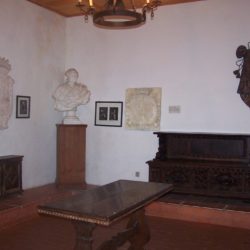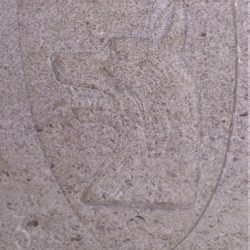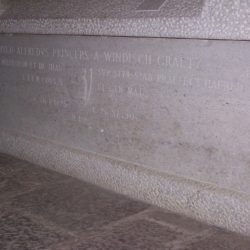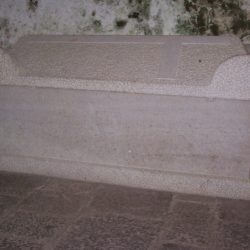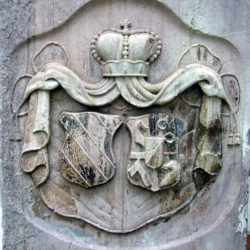
Coats of arms of the Princes Windisch-Graetz in Predjama Castle
PREDJAMA, CASTLE
Location of the coat of arms: other
With its nearly millennial turbulent history, Predjama Castle attracts many visitors that above all revel in the stories about the exploits of rogue knight Erasmus von Lueg and his tragic death. Somewhat less well known is the story about the Princes von Windisch-Graetz, who in the second half of the nineteenth century saved the decrepit, damp, and hardly accessible castle from ruin and ensured that it has been preserved to the present day. The Windisch-Graetzes became its owners in 1846, when Countess Sophia Coronini sold Predjama Castle to Prince Weriand von Windisch-Graetz together with Logatec (Germ. Loitsch), Planina (Hošperk; Haasberg), and Šteberk (Stegberch). How and why the Windisch-Grätzes became some of the largest feudal lords in Slovenia in the second half of the nineteenth century is revealed by an interesting family story.
Weriand’s father, Count Josef Nicholas (1744–1802), earned his fame as a well-versed writer, philosopher, and ardent collector of family documents. In the old parchments, he would often come across the phrase “Windische Mark,” which he could not quite explain to himself as a layman, but its similarity to his family name most certainly fueled his imagination. He even knew a little about a Weriand from (Windisch) Gratz (today’s Slovenj Gradec) mentioned in a document from 1091 (Weriand de Grez). Carried away with enthusiasm, Josef Nicholas spun a story about Weriand as the founder of the Windisch-Gratz family seven centuries earlier, governing over a significant part of modern Lower Carniola and Lower Styria—or the “Windische Mark.” In his conceptions, this territory was the Windisch-Graetzes’ historical heritage. He also wove some of his ideas into his family life; for example, by naming his second-born son Weriand and raising him in the spirit of his romantic beliefs.
Although Josef Nicholas died when his son was merely twelve years old, his father’s ideas grew in the little Weriand and materialized in a unique way. In his adulthood, Weriand embarked on purchasing landed estates in the southern parts of the Austrian Empire to bring back to life the Windisch-Graetzes’ alleged heritage—the County of Windisch-Gratz or “Windisch Mark.” In the span of a little over thirty years (1828–1858), he acquired more than 45,000 hectares of land in modern Slovenia to form his own so-called “Weriand County.” Apart from the aforementioned seigniories in Inner Carniola, which he purchased from the Counts Coronini, he also owned Bogenšperk (Wagensperg), Slatna (Slatenegg), and Mali Grad Castle in Carniola, and he also served as the castellan of Konjice Castle with pertaining Trebnik Mansion, Podsreda Castle (Hörberg), and Bizeljsko Castle (Wisell), together with Kunšperk Castle (Königsberg) as well as Oplotnica Castle (Oplotnitz) and Galenhofen in Styria. After Weriand’s death in 1867, most estates were passed on to his older son Hugo Alfred (1823–1904) and after him to his descendants, who remained in Slovenia until the Second World War.
Predjama Castle, with one of its rooms still displaying the incredibly beautiful Windisch-Grätz copper coat of arms, was not among Weriand’s most important acquisitions. Although the prince had indeed converted the castle into a more comfortable and accessible residence, the building did not undergo any major reconstruction work and largely retained its old appearance. Although the castle fell short of providing all the comforts of a residence, it served perfectly as the hunting lodge of nearby Hošperk Mansion (in Planina).
Sources:
Sapač, Igor: Grajske stavbe v osrednji Sloveniji – III. Notranjska. Med Planino, Postojno in Senožečami. Ljubljana: Viharnik, 2005, pp. 44-67.
Stopar, Ivan: Predjamski grad. Postojna: Postojnska jama, 2001.
Windisch-Graetz, Hugo-Vinzenz: Unsere Familiengeschichte. Selbstverlag, 1959, pp. 9–12, 30–34.

